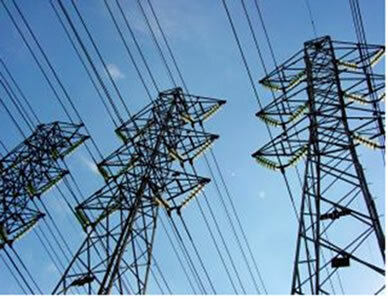Electric generators are devices that convert various types of non-electrical energy (mechanical, wind) into electrical energy. They are used to secure power whenever the electrical current fails.
Thus, the function of a generator is to ensure that the electrical potential difference (ddp), or electrical voltage, lasts longer and does not interrupt the circuit. The electrical circuit is run between the two poles existing in the generator.
At one of these poles, the electrical potential is negative and its voltage is lower, while at the other pole the electrical potential is positive and its voltage is higher.
An ideal generator would be able to convert all the energy. Its potency would be measured using the following formula:
Potg = E.i
Where,
Potg: potency
E: electromotive force
i: electric current
But that's not what happens. In reality, there is a loss of energy, after all electrical loads encounter resistance along the circuit.
It is through the following formula that the real power of a generator is measured:
Potd = r.i²
Where,
Potd = potency
r = conductor resistivity
i = electric current
The generators were discovered thanks to the studies of Michael Faraday, who discovered that the movements of the magnets were capable of generating electrical current.
Types of Generators
There are several types of generators, with the mechanical generator being the most common among them. The typology indicates the form of energy used to generate electrical energy.
- Mechanical Generator - uses mechanical energy and converts it into electrical energy. Example: car alternators.
- Chemical Generator - uses chemical energy, or potential energy, and converts it into electrical energy. Example: batteries.
- Thermal Generator - uses thermal energy and converts it into electrical energy. Example: steam turbines.
- Luminous Generator - uses light energy and converts it into electrical energy. Example: solar panels.
- Wind generator - uses wind energy and converts it into electrical energy. Example: wind turbines.
Read too:
- Electric circuit
- Electric power
- Electrical Resistance
- Energy
- Electric current
- Electric charge
- Kirchhoff's Laws
Exercises
1. (UEPB-PB) In 1820, the Danish scientist Hans Christian Oersted (1777-1851) did not imagine that, with a simple experiment, would discover a fundamental physical principle for the functioning of the engine electric.
This principle enabled the emergence and development of a large number of electrical appliances, such as: battery, fan, drill, blender, vacuum cleaner, floor polisher, fruit juicer, sander, as well as numerous battery- and/or plug-powered toys, such as robots, carts, etc., used throughout the world.
Regarding the subject dealt with in the text, in relation to the electric motor, analyze the following propositions, writing V or F according to whether they are true or false, respectively:
( ) The electric motor is a working element that converts electrical energy into rotational mechanical energy.
( ) The electric motor is a machine that converts mechanical energy from rotation into electrical energy.
( ) An electric motor is an application of the fundamental principle of electromagnetism which states that a magnetic force will act on an electrical conductor if that conductor is conveniently placed in a magnetic field and is traversed by a current electric.
After the analysis has been done, check the alternative that corresponds to the correct sequence:
a) VVV
b) FVF
c) FVF
d) FVV
e) VFV
Alternative e: VFV
2. (ITAJUBÁ – MG) A battery has an electromotive force of 20.0 V and an internal resistance of 0.500 ohm.
If we intersperse a 3.50 ohm resistance between the battery terminals, the potential difference between them will be:
a) 2.00 * 10V
b) a value slightly less than 2.00 * 10V
c) 1.75 * 10V
d) 2.50V
Alternative c: 1.75 * 10V


